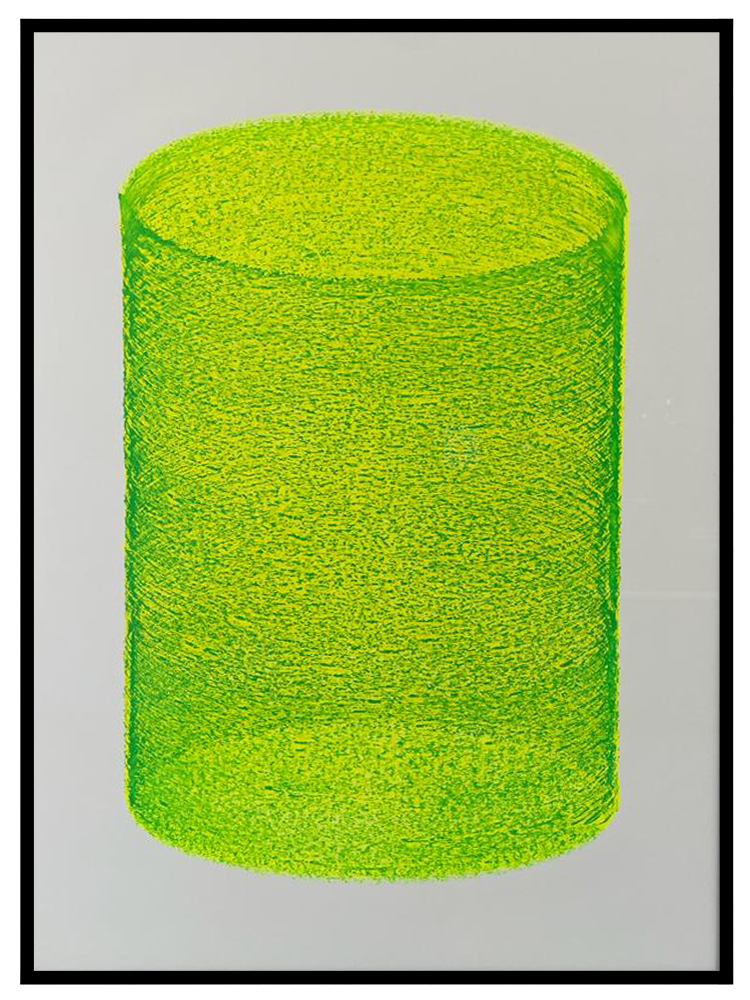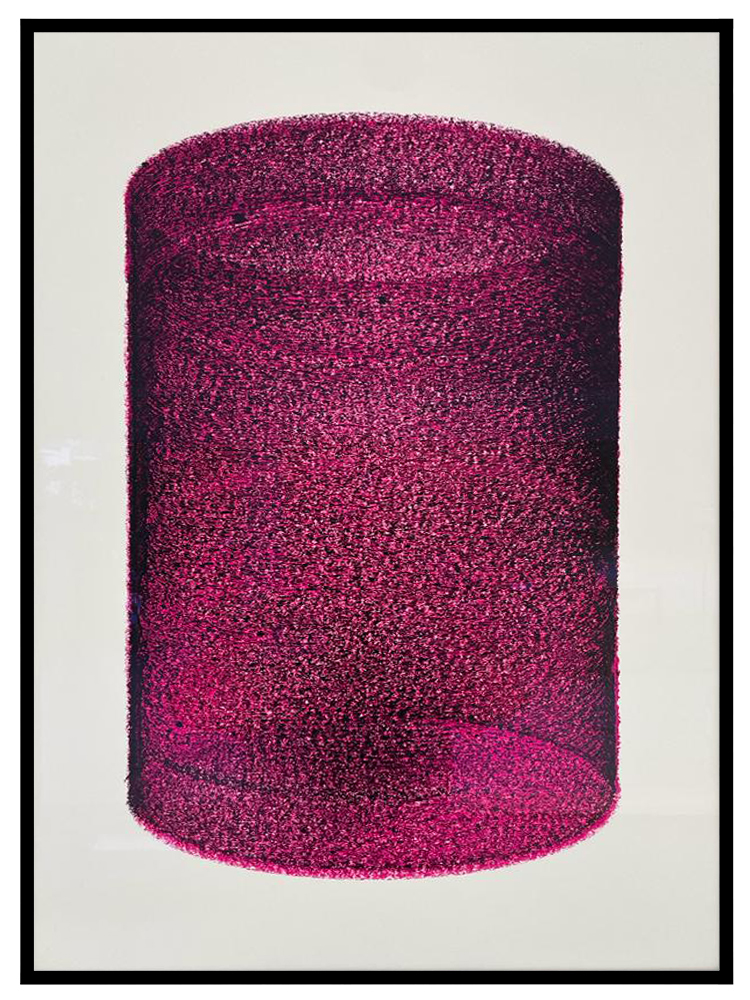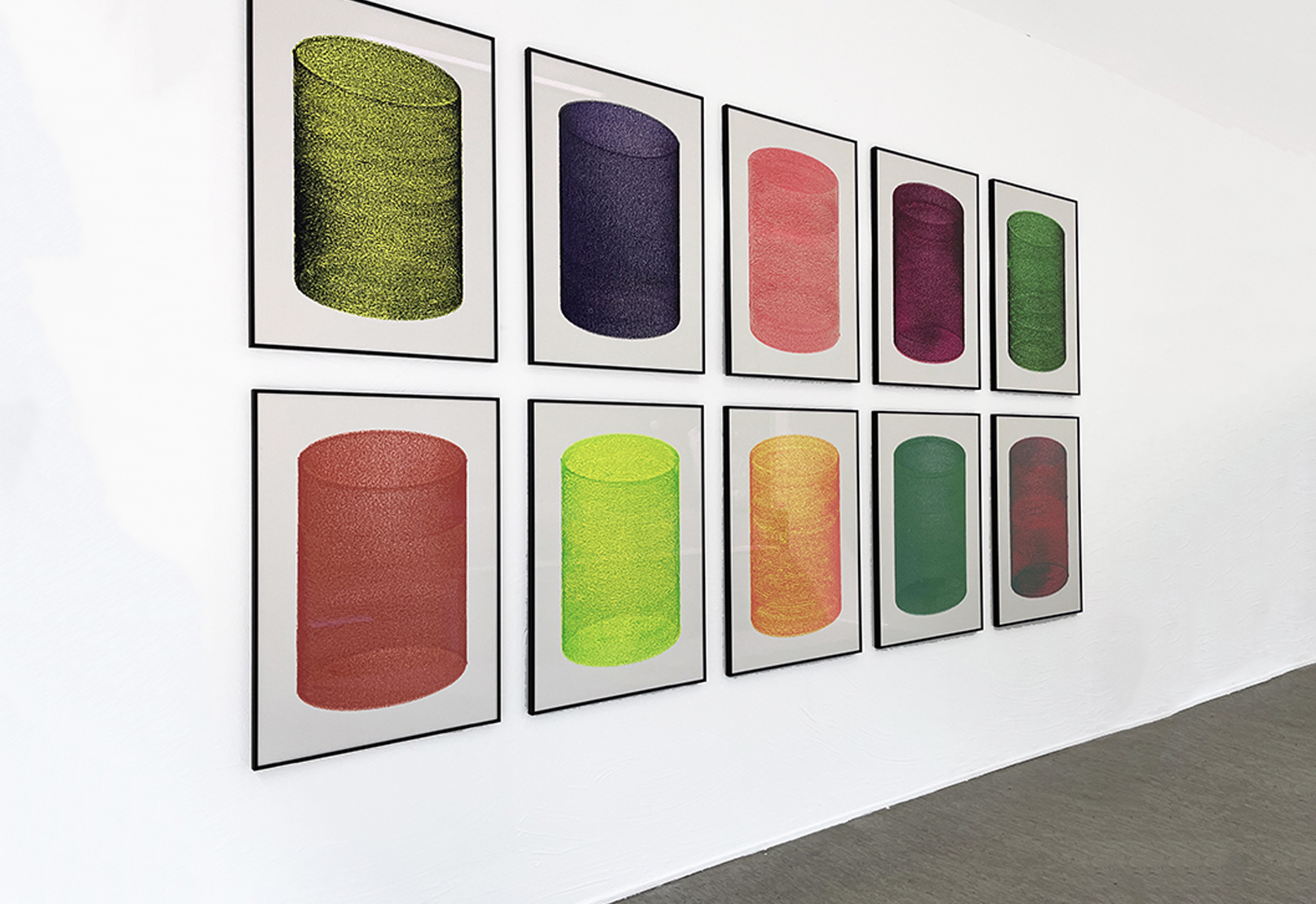Marcel Schwittlick: Upward Spiral : LAB / Verena Kerfin Gallery, Köthener Strasse 28, Berlin 10963
Past
exhibition
Overview
Marcel Schwittlick’s Plotter Art: Navigating Digital and Analog Dimensions
Marcel Schwittlick’s “Upward Spiral” series exemplifies the intersection of conceptual rigor, technological exploration, and aesthetic reflection. Created between the summer of 2020 and spring 2022, these 144 machine-made drawings are the product of a custom-built drawing machine that translates digital geometry into spiraling movements. Through this practice, Schwittlick engages with longstanding questions in art: the role of process, the interplay between randomness and intention, and the translation of concept into material form.
Schwittlick’s work belongs to the lineage of generative art, a branch of conceptual art where the system and rules established by the artist dictate the final output. As Sol LeWitt famously argued, “the idea becomes a machine that makes the art.” Schwittlick’s systematic use of the 12 colors available in Markal Quik Stik solid paint markers, combined to form all possible pairings (12 × 12 = 144), mirrors LeWitt’s process-driven philosophy. However, Schwittlick expands upon this by transitioning digital design into physical manifestation, exploring the tactile textures and imperfections that emerge during the analog creation of his spirals.
This analog realization resonates with the conceptual ethos of Jean François Lyotard, who dismissed the romanticized notion of the artist-genius by embracing industrial and mechanical production. Schwittlick’s reliance on the plotter, paired with his periodic manual interventions during the nine-hour creation process, strikes a balance between mechanized precision and human intentionality. Spirals: Symbolic and Aesthetic Resonances The spiral motif in Schwittlick’s work evokes rich symbolic connotations. As a geometric form, the spiral suggests movement and transformation, often interpreted as metaphors for growth, progress, or descent. Schwittlick’s description of the spiral as a mental dynamic—either ascending toward self-fulfillment or descending into entropy—finds echoes in art and philosophy. This duality mirrors Wassily Kandinsky’s abstraction in works like Circles in a Circle (1923), where geometric shapes represent inner spiritual movements, and Robert Smithson’s Spiral Jetty (1970), where the spiral conveys the entropy of natural processes.
While Schwittlick’s process might seem mechanized, the practice contains moments of discovery and adaptation. His adherence to routine and acceptance of unforeseen variations align with the Taoist concept of Wu-Wei, or “effortless action.” This principle, often described as achieving harmony through non-resistance, connects to Schwittlick’s description of his process as grounding and peaceful. The repetitive, meditative engagement with his machine reveals parallels with minimalist practices such as Agnes Martin’s methodical grid paintings, which also embrace structured repetition as a form of transcendence.
Schwittlick’s deliberate engagement with plotter technology situates him within a post-Duchampian dialogue on authorship and the role of the machine in art. Andy Warhol’s embrace of the silkscreen technique to “be a machine” serves as a historical precedent for Schwittlick’s detachment from the human hand in favor of mechanical precision. However, Schwittlick departs from Warhol’s celebration of consumerist aesthetics by emphasizing a tactile engagement with materiality, evident in the textured, layered surfaces of his drawings. Art in Crisis: The Creative Response to Isolation Produced during the global Covid-19 pandemic, Schwittlick’s series reflects a broader cultural moment when artists sought solace and structure amid uncertainty. The ritualized process of creating one drawing per day became a counterbalance to the monotony of lockdown routines, transforming mechanical repetition into creative resilience. This response aligns with Marcel Duchamp’s assertion that art provides a space to bypass the limitations of reality, offering a field for exploration and renewal.
Marcel Schwittlick’s “Upward Spiral” captures the tensions between control and spontaneity, mechanization and human touch, digital abstraction and physical texture. By reinterpreting conceptual and generative art traditions, Schwittlick affirms that artistic meaning arises not merely from adherence to systems but also from the exceptions, interruptions, and surprises that emerge along the way. His spirals, both visually and metaphorically, embody the dual potential for ascent and descent, serving as meditative explorations of form, process, and the human condition.
Marcel Schwittlick’s “Upward Spiral” series exemplifies the intersection of conceptual rigor, technological exploration, and aesthetic reflection. Created between the summer of 2020 and spring 2022, these 144 machine-made drawings are the product of a custom-built drawing machine that translates digital geometry into spiraling movements. Through this practice, Schwittlick engages with longstanding questions in art: the role of process, the interplay between randomness and intention, and the translation of concept into material form.
Schwittlick’s work belongs to the lineage of generative art, a branch of conceptual art where the system and rules established by the artist dictate the final output. As Sol LeWitt famously argued, “the idea becomes a machine that makes the art.” Schwittlick’s systematic use of the 12 colors available in Markal Quik Stik solid paint markers, combined to form all possible pairings (12 × 12 = 144), mirrors LeWitt’s process-driven philosophy. However, Schwittlick expands upon this by transitioning digital design into physical manifestation, exploring the tactile textures and imperfections that emerge during the analog creation of his spirals.
This analog realization resonates with the conceptual ethos of Jean François Lyotard, who dismissed the romanticized notion of the artist-genius by embracing industrial and mechanical production. Schwittlick’s reliance on the plotter, paired with his periodic manual interventions during the nine-hour creation process, strikes a balance between mechanized precision and human intentionality. Spirals: Symbolic and Aesthetic Resonances The spiral motif in Schwittlick’s work evokes rich symbolic connotations. As a geometric form, the spiral suggests movement and transformation, often interpreted as metaphors for growth, progress, or descent. Schwittlick’s description of the spiral as a mental dynamic—either ascending toward self-fulfillment or descending into entropy—finds echoes in art and philosophy. This duality mirrors Wassily Kandinsky’s abstraction in works like Circles in a Circle (1923), where geometric shapes represent inner spiritual movements, and Robert Smithson’s Spiral Jetty (1970), where the spiral conveys the entropy of natural processes.
While Schwittlick’s process might seem mechanized, the practice contains moments of discovery and adaptation. His adherence to routine and acceptance of unforeseen variations align with the Taoist concept of Wu-Wei, or “effortless action.” This principle, often described as achieving harmony through non-resistance, connects to Schwittlick’s description of his process as grounding and peaceful. The repetitive, meditative engagement with his machine reveals parallels with minimalist practices such as Agnes Martin’s methodical grid paintings, which also embrace structured repetition as a form of transcendence.
Schwittlick’s deliberate engagement with plotter technology situates him within a post-Duchampian dialogue on authorship and the role of the machine in art. Andy Warhol’s embrace of the silkscreen technique to “be a machine” serves as a historical precedent for Schwittlick’s detachment from the human hand in favor of mechanical precision. However, Schwittlick departs from Warhol’s celebration of consumerist aesthetics by emphasizing a tactile engagement with materiality, evident in the textured, layered surfaces of his drawings. Art in Crisis: The Creative Response to Isolation Produced during the global Covid-19 pandemic, Schwittlick’s series reflects a broader cultural moment when artists sought solace and structure amid uncertainty. The ritualized process of creating one drawing per day became a counterbalance to the monotony of lockdown routines, transforming mechanical repetition into creative resilience. This response aligns with Marcel Duchamp’s assertion that art provides a space to bypass the limitations of reality, offering a field for exploration and renewal.
Marcel Schwittlick’s “Upward Spiral” captures the tensions between control and spontaneity, mechanization and human touch, digital abstraction and physical texture. By reinterpreting conceptual and generative art traditions, Schwittlick affirms that artistic meaning arises not merely from adherence to systems but also from the exceptions, interruptions, and surprises that emerge along the way. His spirals, both visually and metaphorically, embody the dual potential for ascent and descent, serving as meditative explorations of form, process, and the human condition.
Installation Views
Works
-
 Marcel SchwittlickUpward Spiral (Neon green & black), 2021
Marcel SchwittlickUpward Spiral (Neon green & black), 2021 -
 Marcel SchwittlickUpward Spiral (Neon yellow & neon orange), 2021
Marcel SchwittlickUpward Spiral (Neon yellow & neon orange), 2021 -
 Marcel SchwittlickUpward Spiral, 2021
Marcel SchwittlickUpward Spiral, 2021 -
 Marcel SchwittlickUpward Spiral, 2021
Marcel SchwittlickUpward Spiral, 2021 -
 Marcel SchwittlickUpward Spiral, 2021
Marcel SchwittlickUpward Spiral, 2021 -
 Marcel SchwittlickUpward Spiral, 2021
Marcel SchwittlickUpward Spiral, 2021 -
 Marcel SchwittlickUpward Spiral, 2021
Marcel SchwittlickUpward Spiral, 2021 -
 Marcel SchwittlickUpward Spiral, 2021
Marcel SchwittlickUpward Spiral, 2021 -
 Marcel SchwittlickUpward Spiral, 2021
Marcel SchwittlickUpward Spiral, 2021
×









